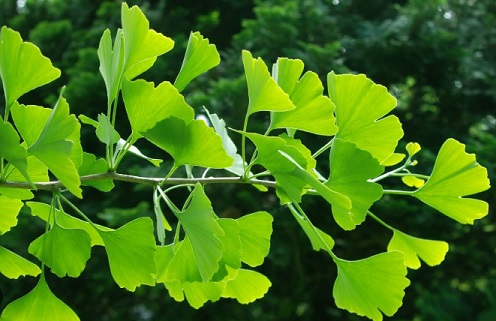Scientists in China Discover That the Phytochemical Ginkgolic Acid Inhibits Ebola Virus
Nikhil Prasad Fact checked by:Thailand Medical News Team Dec 24, 2024 11 months, 4 weeks, 16 hours, 57 minutes ago
Medical News: A Natural Compound with Promising Antiviral Potential
A groundbreaking discovery in the fight against the deadly Ebola virus has come to light through the collaborative efforts of researchers from Southern Medical University in Guangzhou, Southern Medical University in Foshan, and The Hong Kong University of Science and Technology. The study identifies ginkgolic acid, a natural phytochemical compound derived from the Ginkgo biloba tree, as a potent inhibitor of Ebola virus transcription and replication. This
Medical News report delves into the details of the research, highlighting its significance for global health.
 Scientists in China Discover That the Phytochemical Ginkgolic Acid Inhibits Ebola Virus
Understanding the Threat of Ebola Virus
Scientists in China Discover That the Phytochemical Ginkgolic Acid Inhibits Ebola Virus
Understanding the Threat of Ebola Virus
Ebola virus disease (EVD) is one of the most severe viral infections known to humanity. Since its discovery in 1976, the virus has caused numerous outbreaks, leading to thousands of deaths. Despite extensive research, its complex pathogenesis and rapid spread have hindered the development of effective treatments. The Ebola virus, classified under the Filoviridae family, carries a single-stranded RNA genome approximately 18.9 kilobases in length. This genome encodes seven primary proteins crucial for the virus's life cycle, including the nucleoprotein (NP) and VP30 protein.
The VP30 protein plays a pivotal role in the virus’s replication by interacting with NP. Disrupting this interaction has long been viewed as a promising strategy for halting the virus’s ability to multiply within human hosts. However, identifying compounds that can effectively target this interaction has been a daunting challenge. Traditional antiviral approaches have often focused on general mechanisms rather than the specific protein-protein interactions vital for the virus’s survival.
The Role of Ginkgolic Acid
Ginkgolic acid (GA) emerged as a promising candidate in this study due to its ability to disrupt the VP30-NP interaction. Through advanced techniques such as fluorescence polarization assays, thermal shift assays, and surface plasmon resonance, researchers demonstrated that GA binds to a specific groove on the VP30 protein, which is critical for its interaction with NP. This binding effectively inhibits the transcription and replication of the virus, as validated in a transcription- and replication-competent virus-like particle (trVLP) system.
To further elucidate the mechanism, the research team resolved the crystal structure of the VP30-GA complex. Remarkably, the structure revealed that two GA molecules occupy the interaction interface between VP30 and NP. This novel insight not only confirms the specificity of GA’s antiviral action but also opens new avenues for drug design targeting similar protein-protein interactions in other viruses.
Study Methodology and Key Findings
The researchers’ methodology involved screening a library of natural compounds to identify inhibitors of the VP30-NP interaction. Am
ong the tested compounds, ginkgolic acid stood out due to its high binding affinity and potent inhibitory effects. The compound’s antiviral activity was tested in vitro using the trVLP system, which mimics the transcription and replication mechanisms of the Ebola virus without requiring the use of live virus, ensuring safety in laboratory settings.
Using various assays, the researchers validated that GA specifically targets the VP30-NP interface. Pull-down and co-immunoprecipitation assays further confirmed the disruption of this interaction. Additionally, structural analysis provided a detailed view of how GA molecules fit into the VP30 binding groove, offering a blueprint for the rational design of future antiviral drugs.
Implications for Ebola Treatment
This study’s findings mark a significant step forward in the search for effective treatments against Ebola virus. The identification of ginkgolic acid as an inhibitor of the VP30-NP interaction underscores the potential of natural compounds in drug discovery. Historically, traditional Chinese herbal medicine has been a rich source of bioactive compounds, and this research highlights its relevance in modern medicine.
The specificity of GA’s action is particularly noteworthy. Unlike broad-spectrum antiviral drugs, which often come with a range of side effects, GA’s targeted approach minimizes the likelihood of adverse reactions. Furthermore, its unique mechanism of action reduces the risk of resistance development, a common challenge in antiviral therapy.
Broader Applications and Future Directions
While the study focuses on Ebola virus, the implications extend beyond this specific pathogen. The VP30-NP interaction is a model for understanding protein-protein interactions essential for viral replication. The strategies employed in this research could be adapted to target similar interactions in other viruses, paving the way for a new class of antiviral drugs.
Future research will likely focus on optimizing GA’s pharmacokinetic properties to enhance its efficacy and bioavailability in vivo. Additionally, preclinical and clinical trials will be necessary to confirm its safety and effectiveness in human subjects. Collaborative efforts between academic institutions and pharmaceutical companies will be crucial in translating these findings into a viable treatment option.
Conclusion
This study highlights the immense potential of ginkgolic acid as a therapeutic agent against the Ebola virus. By specifically targeting the VP30-NP interaction, GA disrupts the virus’s ability to replicate, offering a novel mechanism of action distinct from existing antiviral drugs. The use of advanced structural biology techniques to elucidate the compound’s mode of action provides a solid foundation for further drug development.
In addition to its immediate implications for Ebola treatment, this research underscores the value of natural compounds in the search for new drugs. The findings serve as a testament to the power of interdisciplinary collaboration, combining traditional medicine, modern pharmacology, and cutting-edge structural biology to address global health challenges.
The study findings were published in the peer reviewed journal: Antiviral Research.
https://www.sciencedirect.com/science/article/abs/pii/S0166354224002857
For the latest on Herbs and Phytochemicals, keep on logging to Thailand
Medical News.
Read Also:
https://www.thailandmedical.news/news/silico-study-reveals-potential-antiviral-properties-of-nyctanthes-arbor-tristis-linn-against-ebola-sars2-nipah-chikungunya-viruses
https://www.thailandmedical.news/news/breakthrough-study-on-how-marburg-and-ebola-viruses-interact-with-cell-membranes
https://www.thailandmedical.news/news/american-study-shows-that-the-phytochemical-ginkgolic-acid-from-gingko-biloba-shows-promising-prospects-as-an-antiviral-for-sars-cov-2
https://www.thailandmedical.news/news/breaking-gingko-biloba-emerging-as-potential-herb-to-treat-covid-19-due-to-its-antiviral-and-anti-inflammatory-properties
https://www.thailandmedical.news/news/covid-19-herbs-ginkgo-biloba-and-rhodiola-rosea-for-post-covid-cognitive-impairment-and-fatigue
https://www.thailandmedical.news/articles/herbs-and-phytochemicals
